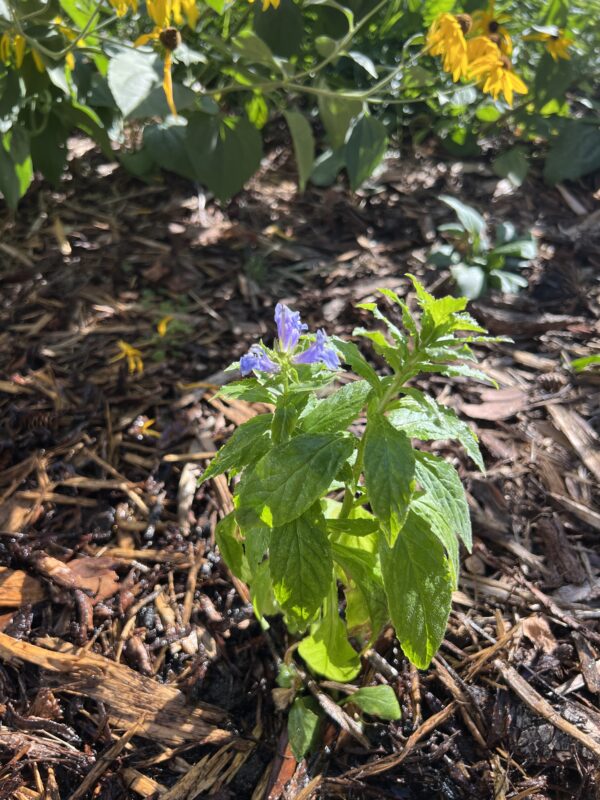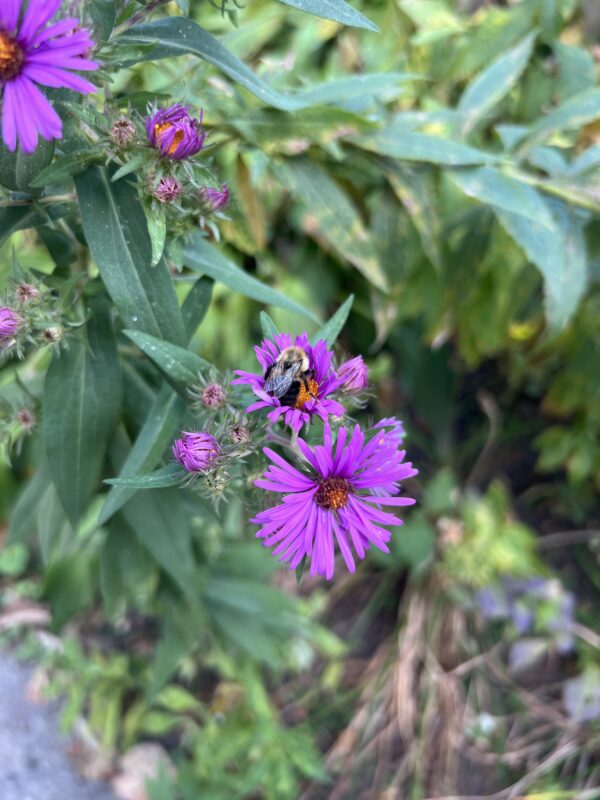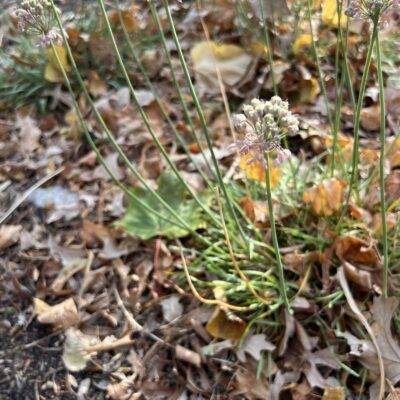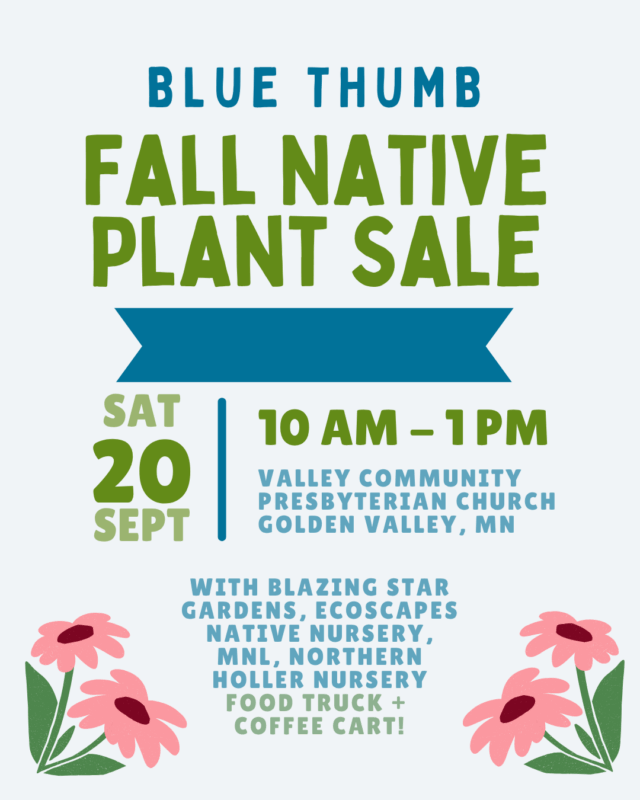
Are you done planting for the season? Think again. You’re missing a seasonal sweet spot. Fall is an excellent time of year to plant native and support pollinators. Today, we’re clearing up some common fall planting myths — because gardening season isn’t over quite yet!
Myth #1: Fall is not a gardening time of year.
Truth: Minnesota does have a fall planting season for perennials, which offers several benefits compared to spring. These include:
- Cooler weather. Lower temperatures reduce stress for newly planted plugs.
- Less watering. Water your new planting 1 inch, once a week when there is no rain, up until the first frost.
- Less weeding! Weed growth slows down with cooler temperatures, though it’s still good to regularly pull weeds near your planting to help new plants thrive.
- More root growth. As temperatures drop, new plants put more energy into root growth, setting them up for long-term success.
Myth #2: Native plants are out of stock by the fall.
Truth: Many native plant nurseries restock their shelves for the fall planting season. That being said, demand for native plants is high right now, so it’s helpful to make your orders before it gets too late in the season. Some Minnesota native plant nurseries are accepting pre-orders for fall planting right now! If you’re in the Twin Cities Area, Blue Thumb is hosting a Fall Native Plant Sale in Golden Valley on Saturday, September 20.
 Myth #3: My new little plants will die off when winter comes!
Myth #3: My new little plants will die off when winter comes!
Truth: Minnesota native plants are adapted to survive our cold, harsh winters. It’s normal for native plants to die back aboveground, while their roots stay alive. This is called winter dormancy, and it’s part of the natural life cycle of native perennial plants. For extra protection and to reduce frost-heaving of new plants, add 2-3 inches of mulch to your planting.
Plant perennials between late August and early October, or at least 6–8 weeks before the first hard frost. This will give your plants enough time to establish their roots and make it through the winter. One benefit of planting in fall is that spring temperatures and thaw times are often unpredictable. Plants that overwinter outside in the ground can break their dormancy naturally using environmental cues — so no guessing games for you!
Myth #4: Planting in fall means it will take longer for my plants to bloom. 
Truth: Not the case! Think of it this way — by planting in fall, you are giving your plants a head start when spring comes, as opposed to waiting until next year to plant. Remember that native perennials take time with their growth.
A common saying that describes how a new native garden changes over time is “sleep, creep, and leap.” In the first year (this fall through next fall), most of your new plants will just have leafy, green growth with few or no blooms. If you are weeding diligently, next year your new plants will start to spread and fill in, with more blooming for the first time. Finally, in year three and beyond, your plants will mature and fill with blooms. Their roots will be well-established, and you’ll only need to water during periods of extended drought.
Myth #5: During fall pollinators are winding down and won’t be able to enjoy my new plants.
 Truth: Take the long view! You are creating a resource for your local pollinators that will hopefully support them for years to come. By planting in fall, you are also creating overwintering habitat essential to pollinators and other beneficial insects. For example, stem-nesting bees will lay their eggs in the hollows of stems, and ground-nesting bees will dig a hole in the ground to overwinter. Leave your stems standing, keep leaf litter on your garden beds, and leave some bare, undisturbed soil to help insects survive the winter and emerge in the spring to be greeted by your new garden!
Truth: Take the long view! You are creating a resource for your local pollinators that will hopefully support them for years to come. By planting in fall, you are also creating overwintering habitat essential to pollinators and other beneficial insects. For example, stem-nesting bees will lay their eggs in the hollows of stems, and ground-nesting bees will dig a hole in the ground to overwinter. Leave your stems standing, keep leaf litter on your garden beds, and leave some bare, undisturbed soil to help insects survive the winter and emerge in the spring to be greeted by your new garden!
Have we convinced you to add some native plants to your outdoor space this fall? If you live in the Twin Cities Metro Area, come check out our Blue Thumb Fall Native Plant Sale in Golden Valley on September 20 from 10 am – 1 pm! Shop Minnesota native plants from Lawns to Legumes partner nurseries Ecoscapes, Blazing Star Gardens, MNL, and Northern Holler Nursery — some are taking preorders now. A food truck and coffee cart will be there as well to fuel you as you purchase plants to fuel our pollinator friends!
More Fall Planting Resources
- Planting for Pollinators in Fall
- Getting to Know Native Seeds
- Plan a Project Guides
- Blue Thumb Fall Native Plant Sale
– Megan Reich, Metro Blooms Communications and Program Manager
